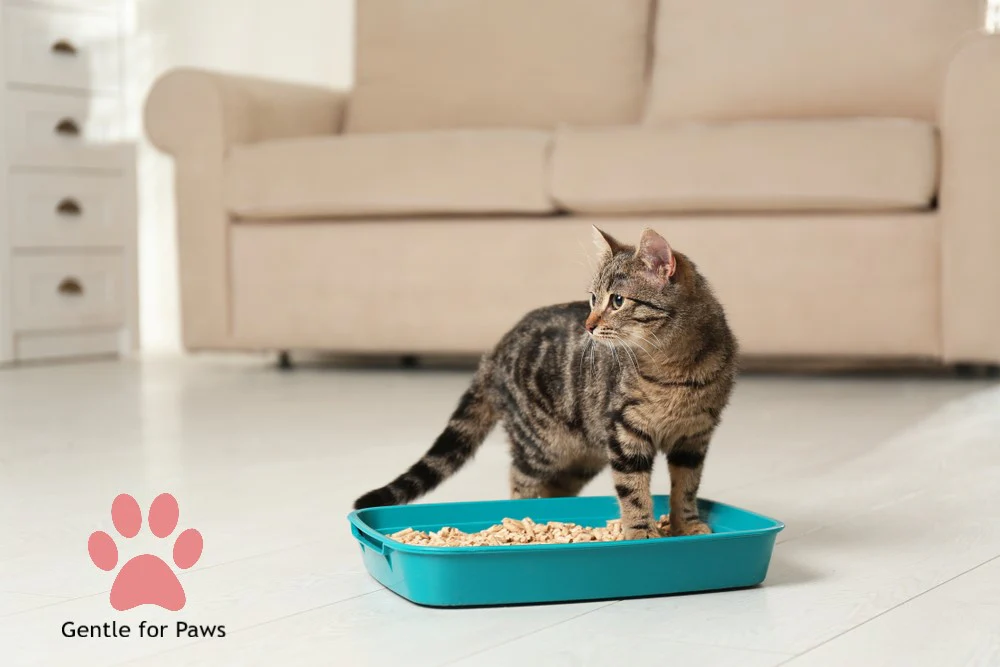Bringing a kitten home can be an exciting yet challenging experience, especially when it comes to litter training. Fortunately, kittens instinctively prefer using a cat litter box, making the process more straightforward with a little guidance. Start by placing the litter box in a quiet, easily accessible location, ensuring your kitten feels safe while using it.
It’s essential to introduce the language of cats into your training approach. Kittens often communicate their comfort or discomfort through subtle behaviors. Observing your kitten and understanding cat behavior will help you identify when they need to use the litter box. Most kittens prefer to use the box after meals or naps, so take these moments to gently guide them to their cat litter tray.
Consistency and patience are key. Avoid scolding your kitten for accidents, as this may create fear or confusion. Instead, praise them when they use the box correctly. Whether you’re using a traditional box or a self-cleaning litter box, keep it clean to encourage regular use. A clean environment aligns with a cat’s natural instincts, making training more effective.
Choosing a Litter Box
Not all litter boxes are the same, and selecting the right one can make a significant difference in your kitten’s comfort. Standard cat litter boxes are a great starting point for young kittens due to their simple design. For busy pet owners, a self-cleaning litter box might be a better fit, as it minimizes maintenance while keeping the box fresh and inviting.
The size of the litter box matters too. A box that’s too big might intimidate your kitten, while a box that’s too small may not accommodate their growth. A shallow tray is ideal for young kittens to make entry and exit easier. Over time, you can transition to a larger cat litter tray or covered box as your kitten grows more confident.
Location is equally important. Place the box in a private but accessible spot away from noisy appliances or high-traffic areas. This ensures your kitten feels secure when using it, promoting consistent habits.
Types of Litter
Choosing the right type of litter is as important as selecting the box itself. Many cat owners prefer wood pellets cat litter due to its natural odor control, high absorbency, and eco-friendly properties. Clumping cat litter, on the other hand, is convenient for easy scooping but may not be suitable for young kittens who might ingest it.
Wood cat litter is an excellent choice for kittens as it’s gentle on their paws and free from harmful chemicals. Additionally, the natural scent of wood pellets cat litter often appeals to cats, encouraging them to use the box more consistently.
Experimenting with different litters can help you identify what works best for your kitten. Observing your pet’s cat behaviors will indicate their preferences, making it easier to settle on the ideal option.
Creating a Safe and Clean Place
A safe, clean environment is crucial for encouraging healthy litter habits. Cleanliness not only supports hygiene but also aligns with the natural language of cats, who prefer tidy spaces. Regularly scoop the litter and replace it as needed to maintain freshness, especially if you’re using non-clumping options like wood pellets cat litter.
To minimize mess, consider using a cat litter tray with high sides or a mat underneath to catch scattered litter. Additionally, placing the tray in a quiet, secure location helps your kitten feel more at ease. These steps not only make training easier but also foster a positive association with the litter box.
See also. 7 Practical Tips for a Cleaning Cat’s Litter Box
Introduce Pine Pellet Cat Litter to Your Cat
Pine pellet cat litter is an eco-friendly and highly absorbent option that many pet owners love. Its natural texture and pleasant scent create a welcoming environment for kittens, aligning with their preferences. Transitioning your kitten to pine pellet litter can be simple and stress-free. For a detailed guide on how to introduce pine pellet cat litter, check out the link.
Understanding Cat Behavior
Understanding your kitten’s behavior is essential for effective litter training. Cats communicate their needs and emotions through subtle cues, such as pawing, sniffing, or scratching. By recognizing these signs, you can guide your kitten toward healthy habits.
Training becomes easier when you embrace understanding cat behavior and tailor your approach to their instincts. For example, kittens may avoid the litter box if it’s too dirty or placed in a stressful area. Monitoring their reactions and adjusting accordingly ensures a positive experience for your kitten.
Remember, litter training is a learning process for both you and your kitten. With patience, the right tools like wood cat litter, and an understanding of their behavior, you’ll create a harmonious routine that keeps your home clean and your furry friend happy.

